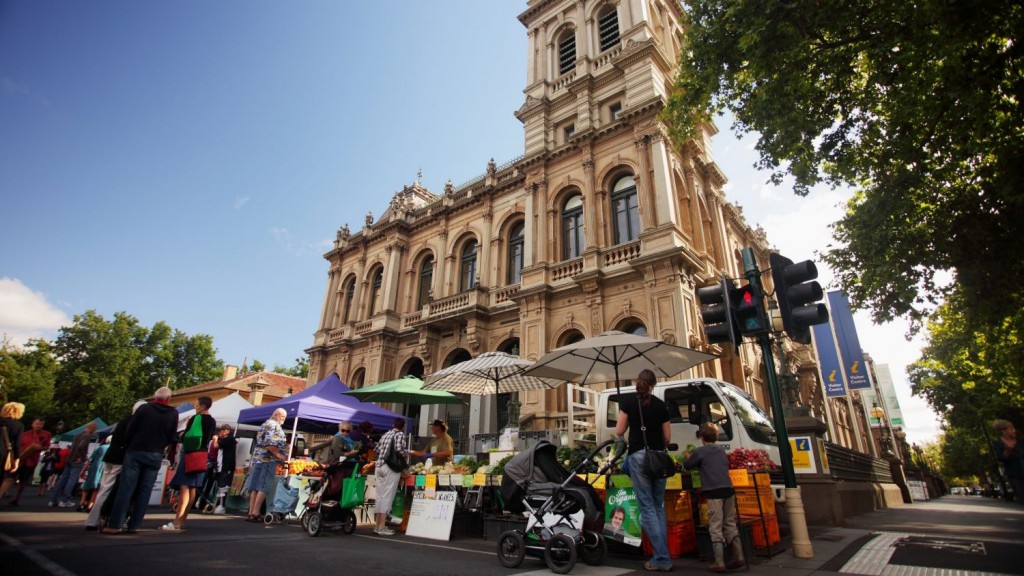It’s always sunnier in Bendigo. Literally – moisture gets caught on the Great Dividing Range, helping the northern half of Victoria generally stay freer of cloud cover than Melbourne.
And few have noticed this more than Kylie Page, who moved to Bendigo one year ago after more than a decade in Melbourne.
“It’s just generally sunnier here, when you come up over the Great Dividing Range, suddenly there’s sunshine,” Page says. “The sunshine has a big impact on your mood … I do find generally I’m more relaxed just being here, having that bit more free time and not being stuck in the grind.”
Ms Page and her partner, Linton Young, grew up in the country and the decision to pack up and head 150 kilometres north west was sparked by a desire to give their kids the small-town lifestyle they enjoyed.
But against the backdrop of a ballooning population – quickly spreading out into Bendigo’s new suburbs and nearby towns – Page hopes her new city is future-proofed against becoming the exact place they left.
“To be honest, I hope it stops growing; we moved out of the big city because we don’t like big cities,” she says. “If this gets any bigger, it will start to get some of those negative things [that Melbourne has].”
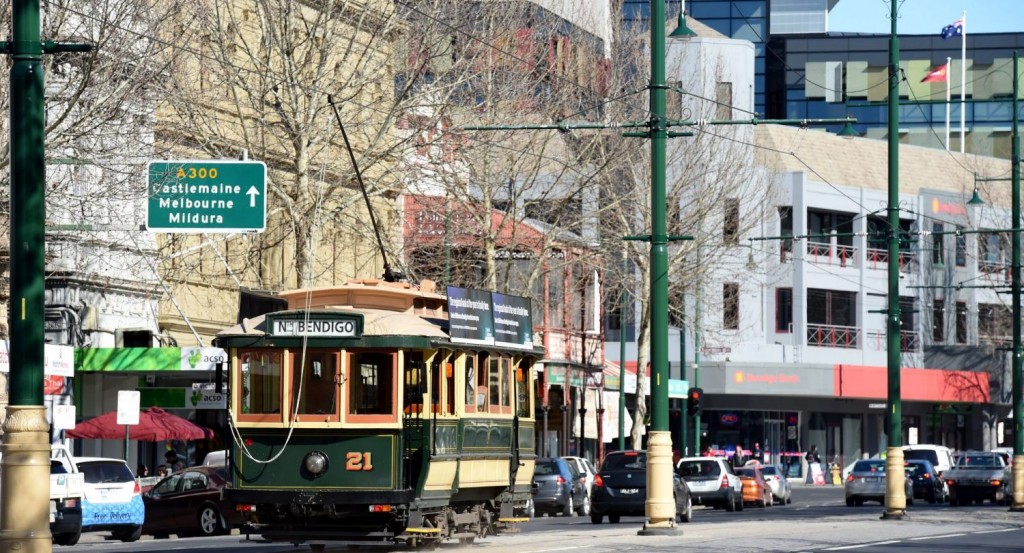
It’s always sunnier in Bendigo: A tourist “talking” tram ambles along Pall Mall. Photo: Jodie Donnellan
Between Melbourne’s runaway house prices and its congestion, it is easy to see why more people are being pulled to Bendigo. The fast rail service and the duplicated Calder Highway easily links residents with Melbourne, while major employers such as Bendigo Bank, the newly opened hospital and La Trobe University lure workers in from Melbourne and surrounding rural towns.
According to the City of Greater Bendigo council, more people are now commuting daily to Bendigo than leaving it.
“If you look at population growth around Australia, anywhere within two hours of the major capitals is growing and Bendigo has the added advantage of being a large centre in its own right,” demographer Glenn Capuano of .id says. The population is estimated by id. to hit about 115,000 this year, with another 41,000 to be added by 2036.
And with a significant population of young people, many are heading to the city’s outer suburbs for a affordable start. “Most of the growth has been on the fringe, and although there is some substantial growth within central Bendigo, the really significant growth is in places like Strathfieldsaye and Huntly on the fringe,” Capuano says.
“People in Australia always preference a larger detached house and you can still get that in regional areas and not have to long commute … Compared to a metropolitan area, you can live on the fringe and still only be 10 mins from the centre of town, which you can’t in Melbourne.”
The last census shows Bendigo’s main population gains from came from Melbourne. Those who came were predominantly from the outer eastern suburbs. But since 2011, Melbourne house prices have skyrocketed, meaning the next census could paint an even stronger picture of such migration. Results are expected mid-year.
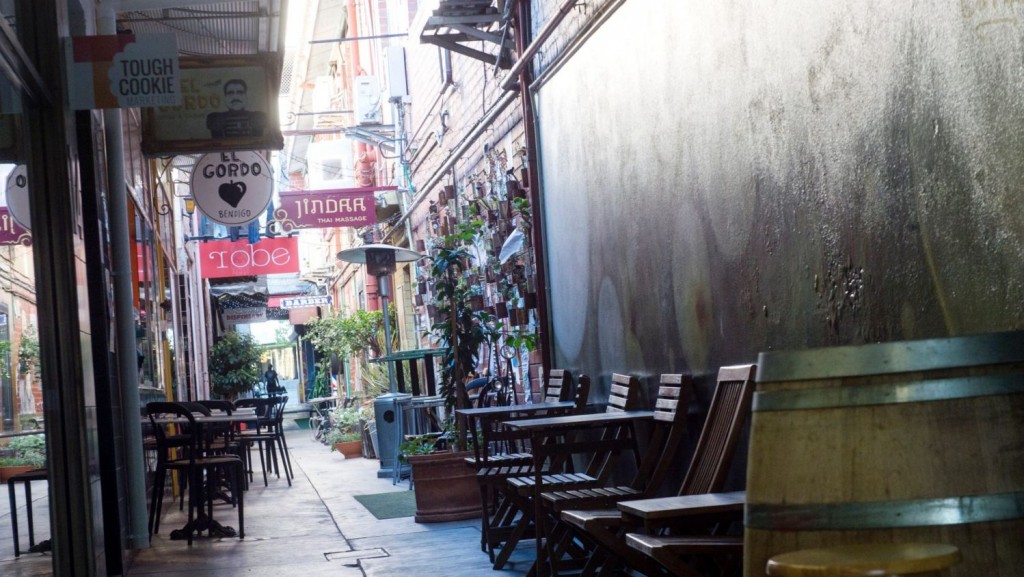
Chancery Lane in Bendigo, one of the areas transformed in recent years as the city has grown. Photo: Darren Howe
For ex-Reservoir home owners Ms Page and Mr Young, who are renting in North Bendigo, the affordability factor means they can look for a larger house to buy than they could have in Melbourne.
“Our median house price sits either side of about $400,000,” DCK Real Estate Agents director Matt Bowles, who is helping the couple in their house search, says. “For that price, you can get an established home close to town, or a substantial home in a newer suburb.”
Accommodating the growing number of Bendigonians is something the council has been aware of for some time. Former mayor Lisa Ruffell says the challenges of urban sprawl have been at the top of the city’s list of challenges for some time.
“I think our forefathers didn’t plan that well, because we have the centre here and we’re sprawling right out this way and that way,” says Ruffell, who also owns family business Ruffell Jewellers in the city centre. “But we’re also making little townships everywhere and they are growing and meeting up.
“If the urban sprawl keeps going in Bendigo, one could think that we might catch up to Melbourne … We’ve already seen that happening if you go along Sydney Road and come up through Wallan and Heathcote. I mightn’t see it in my lifetime, my children might only see a snip of it, but their children are definitely going to see it.”
For the current council, planning attention has been channelled into the creation fo the Plan Greater Bendigo blueprint, a discussion paper about the future of the city, in community consultation until the end of the month.
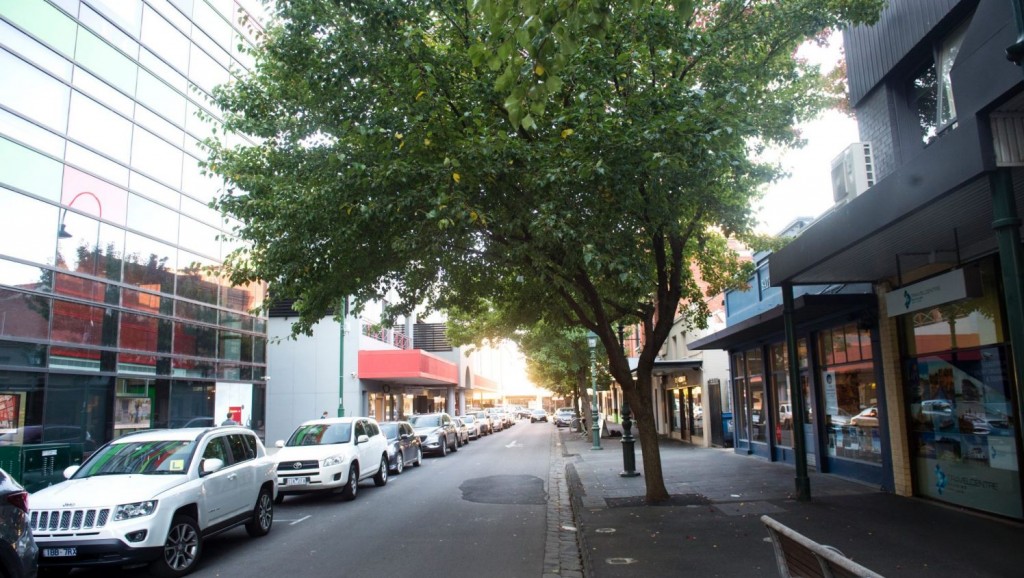
Bath Lane, in central Bendigo, is a mix of cafes, retail – and the Bendigo Bank. Head office is seen left. Photo: Darren Howe
“The population is expected to hit 200,000 by 2050 and that growth is enormous,” mayor Margaret O’Rourke says, adding Bendigo’s biggest growth challenges included transport, water security and sprawl. The city endured a crippling drought just over a decade ago. “We are having those conversations with state government in terms of the infrastructure we need to keep up with that growth.”
One of the major outcomes of the government’s Plan Melbourne blueprint is to encourage jobs and economic growth in regional cities such as Bendigo, which Planning Institute of Australia Victoria president Laura Murray says should future proof the city.
“I don’t see Bendigo having the same stress as Melbourne in terms of population growth, as long infrastructure, key services and economic growth is prioritised; then I think they’re on the right track,” Murray says.
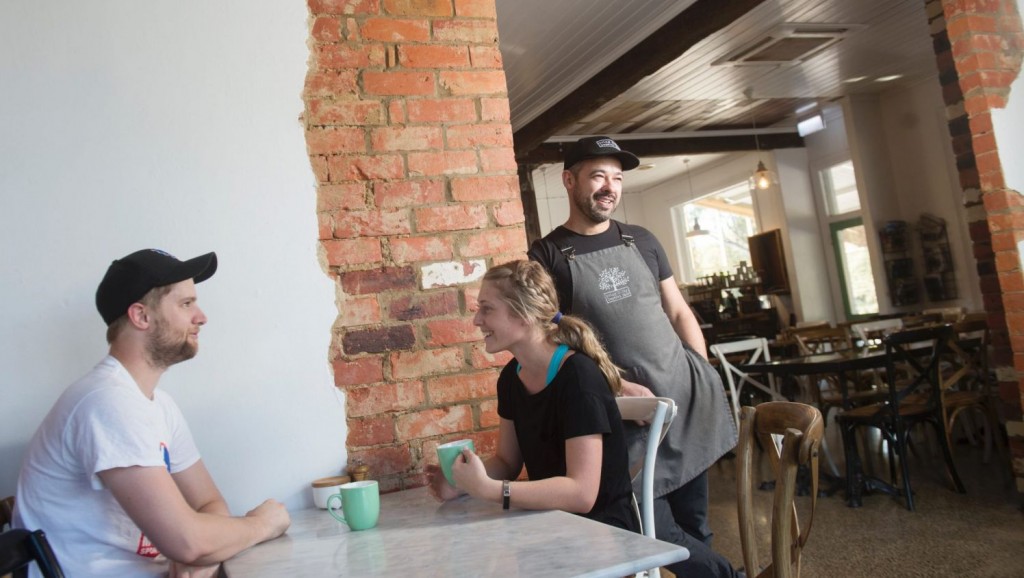
Adam Nicoletti in his cafe, Spring Gully General Store, with customers Rhys Hobbs and Belle Harrington. Photo: Darren Howe
“[Urban sprawl] will become a concern for Bendigo if, for example, they aren’t implanting that infrastructure with the sprawl, if they aren’t providing suitable public transport and community infrastucture.”
In a sign of the times, it is not just Bendigo’s population that is spreading out to the suburbs. Spring Gully General Store is a cafe that has brought the town’s burgeoning cafe culture to the heart of suburbia. It is regularly packed, with tattooed baristas serving up cold drip to young professionals or families.
Owner Adam Nicoletti, who grew up in Thornbury, says he notices very little difference between Melbourne and Bendigo.
“I think the cafe culture, the restaurant culture, the way of thinking of people is similar these days,” Nicoletti says. “Bendigo’s a smaller place and a lot more affordable than Melbourne, the property market is going really well … I wouldn’t move back to Melbourne now.”
This article was originally published by Kirsten Robb on the Apr 16, 2017 via domain.com.au

